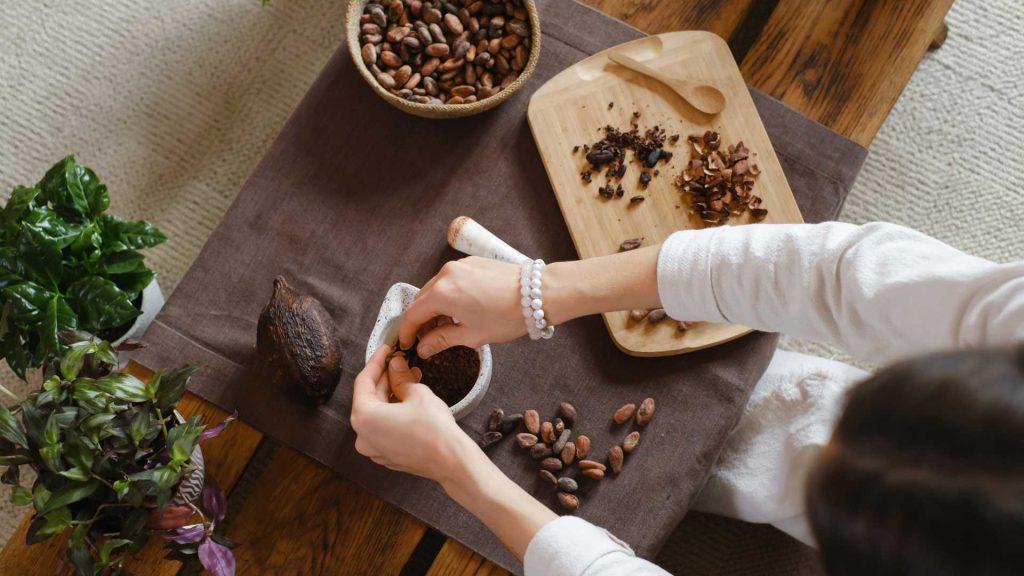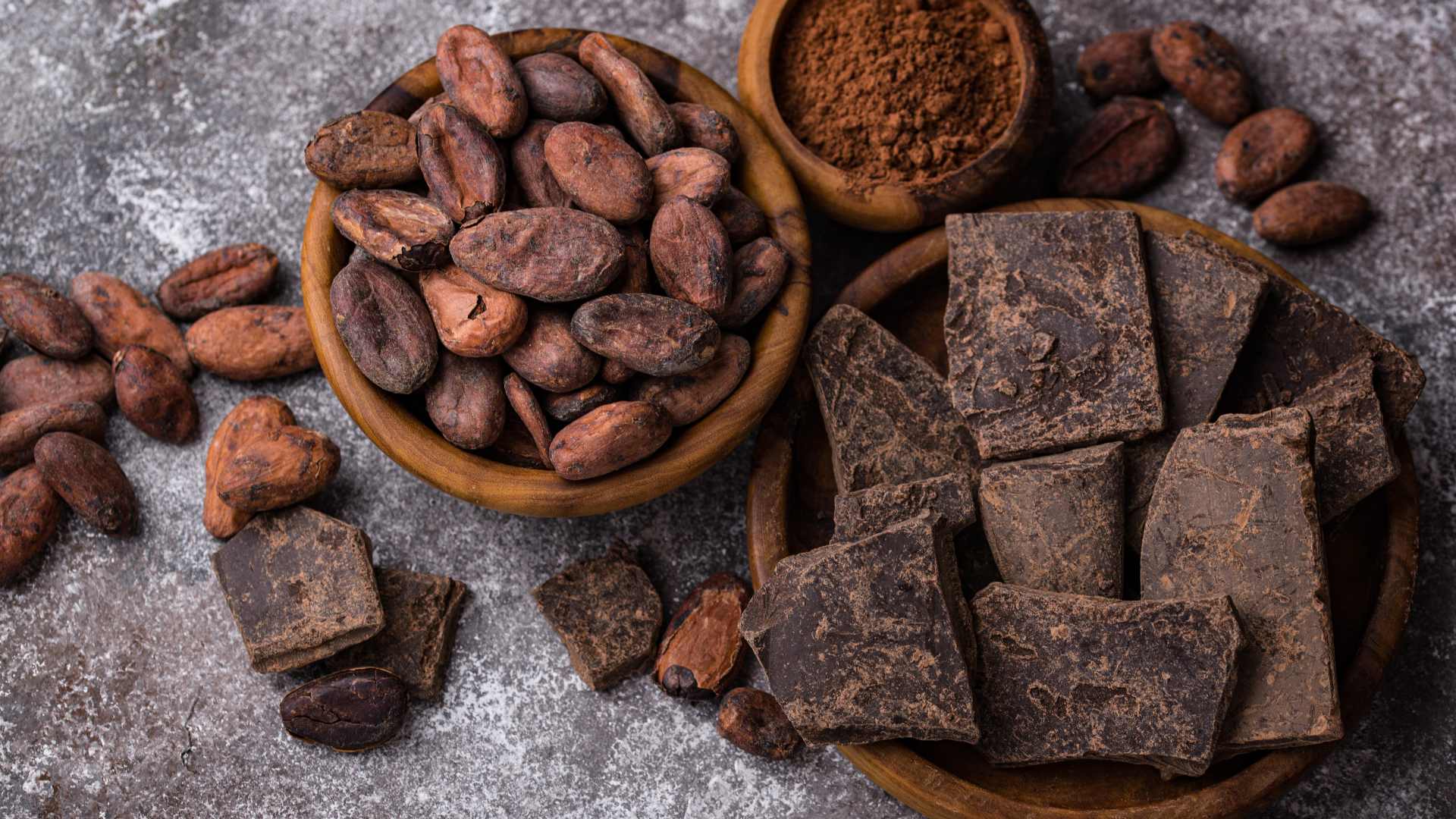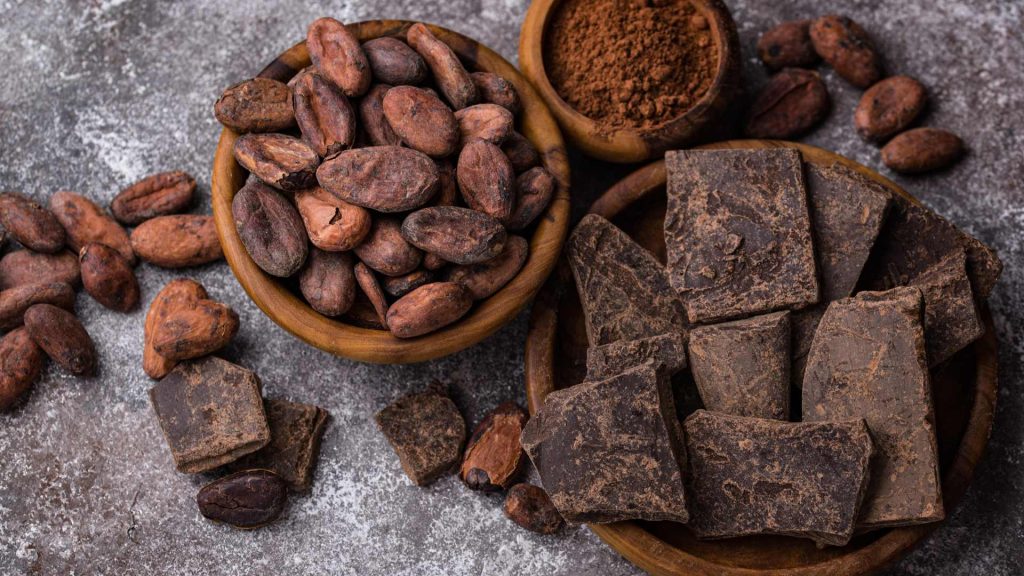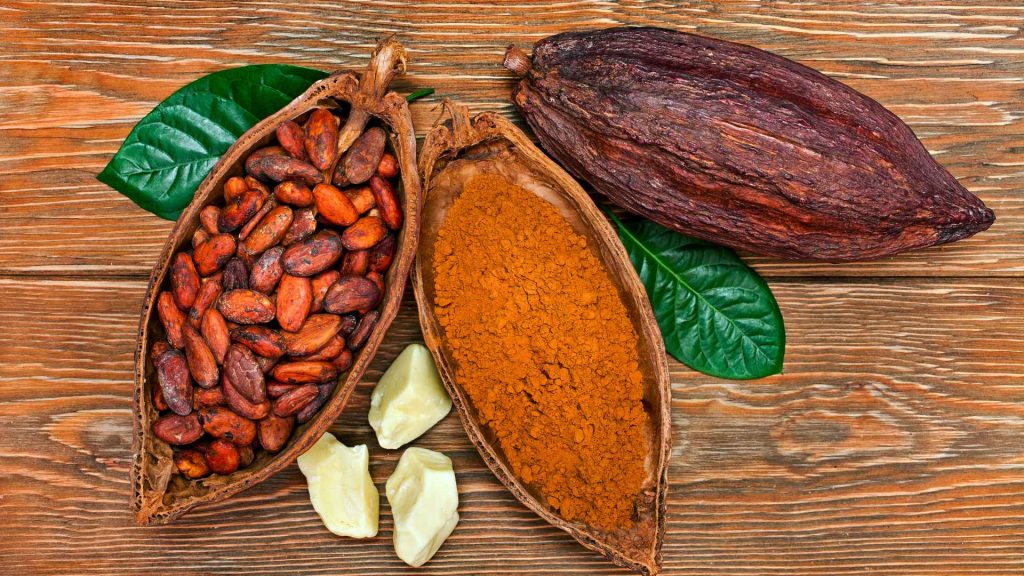Cacao and cocoa are often confused due to their similar appearance and origins, yet they differ significantly in processing, nutritional value, and usage. This blog will explore these differences and highlight the unique benefits of each.
The Origins and Processing of Cacao and Cocoa
Cacao: The Purest Form of Chocolate
Cacao is the raw, unprocessed form of chocolate made from fermented, dried, and unroasted cacao beans. This minimal processing helps retain its high levels of antioxidants and minerals. Cacao is available in various forms, including nibs, butter, and powder, each offering a rich source of nutrients.
Cocoa: The Processed and Refined Option
Cocoa, on the other hand, is made by roasting cacao beans at high temperatures. This process alters the chemical structure of the beans, reducing their enzyme content and overall nutritional value. Cocoa is the primary ingredient in chocolate and hot cocoa, typically found in both bar and powdered forms.
Nutritional Differences Between Cacao and Cocoa
When comparing cacao and cocoa, it's like evaluating the nutritional profiles of raw versus cooked foods. Each offers distinct health benefits, but their nutritional content varies greatly due to the processing methods used.
Cacao: A Nutritional Powerhouse
Cacao is loaded with nutrients, making it a superfood in the chocolate world.
- Rich in Antioxidants: Cacao is abundant in flavonoids, antioxidants that protect cells from damage, reduce inflammation and support heart health.
- High in Magnesium: Cacao provides a significant amount of magnesium, essential for over 300 bodily functions, including muscle and nerve activity, bone health, and maintaining a steady heartbeat.
- Mood and Energy Booster: Theobromine, found in cacao, acts as a natural stimulant, enhancing mood and energy levels.
- Fibre and Iron: Cacao is also an excellent source of dietary fibre, aiding digestion, and iron, which is crucial for oxygen transportation in the blood.
Cocoa: The Sweeter, More Familiar Option
Although cocoa loses some of its nutritional value during processing, it still retains some beneficial properties.
- Sweeter and Milder: Cocoa is often sweeter and milder in flavour, making it more palatable for those who prefer a less intense chocolate experience.
- Retains Some Nutrients: Despite the loss of some nutrients during processing, cocoa still contains essential minerals and compounds that enhance mood.
- Comfort and Pleasure: The sweet flavour of cocoa provides comfort and can contribute to emotional well-being.
Flavour Profiles of Cacao and Cocoa
The flavor profiles of cacao and cocoa are as distinct as their processing methods. While both derive from the same bean, their tastes can be vastly different.
Cacao: Bold and Complex
Cacao offers a rich, complex flavour that is both bold and earthy.
- Bitter Undertones: Cacao has a strong, bitter taste, much like dark coffee or wine, that may take some getting used to but is rewarding for those who enjoy deep, intense flavours.
- Fruity and Nutty Notes: Beneath the bitterness, cacao often reveals subtle fruity and nutty undertones, adding depth to its flavour profile.
Cocoa: Sweet and Creamy
Cocoa is processed and often mixed with sweeteners and dairy, giving it a more approachable flavour.
- Sweet and Mild: Cocoa’s flavor is much sweeter and milder compared to cacao, making it a favorite in desserts and hot beverages.
- Creamy Texture: Cocoa’s creamy, velvety texture adds a luxurious feel to any dish or drink, making it a comforting choice.
Health Benefits of Cacao and Cocoa
Both cacao and cocoa offer various health benefits, but cacao, being less processed, typically provides more nutritional advantages.
Cacao: The Health Guardian
Cacao is known for its extensive health benefits, making it a wise choice for the health-conscious.
- Heart Health: The antioxidants in cacao help reduce the risk of heart disease and lower blood pressure, acting as a protective shield for your cardiovascular system.
- Mood and Cognitive Enhancement: Cacao’s natural compounds, like serotonin and dopamine, enhance mood and cognitive function.
- Weight Management: Cacao can aid in weight management by promoting satiety and reducing cravings.
- Skin Health: The flavonoids in cacao improve blood flow to the skin and protect against sun damage, contributing to healthier skin.
Cocoa: Comfort with Health Perks
Though not as nutrient-dense as cacao, cocoa still offers some health benefits.
- Emotional Well-being: The sweet taste of cocoa can provide comfort and happiness, much like a warm hug.
- Heart Health: Cocoa retains some flavonoids, which can still contribute to heart health, though in lesser amounts than cacao.
- Digestive Aid: Cocoa’s fibre content can aid in digestion, promoting a healthy gut.
Culinary Uses of Cacao and Cocoa
Both cacao and cocoa can be used creatively in the kitchen, but they serve different purposes based on their flavour profiles and nutritional content.
Cacao: The Versatile Kitchen Star
Cacao’s bold flavour makes it a versatile ingredient in various dishes.
- Smoothies: Add cacao to smoothies for a rich, chocolaty flavour and a nutrient boost.
- Baking: Incorporate cacao into baking for a sophisticated, robust chocolate taste.
- Snacks: Cacao nibs make a crunchy, nutritious snack.
- Breakfast Enhancer: Sprinkle cacao on oatmeal or mix it into yogurt for a nourishing start to the day.
Cocoa: The Sweet Culinary Companion
Cocoa’s sweet and mild flavour makes it a favourite in many recipes.
- Baking: Use cocoa to add a sweet, creamy chocolate flavour to cakes, cookies, and brownies.
- Hot Chocolate: Cocoa is the key ingredient in making a comforting cup of hot chocolate.
- Sauces and Frostings: Create rich chocolate sauces and frostings with cocoa.
- Savoury Dishes: Cocoa can also add a subtle sweetness to savoury dishes like sauces and stews.
Conclusion
When deciding between cacao and cocoa, consider your nutritional goals, flavour preferences, and the dish you are preparing. Cacao is the healthier, nutrient-dense choice, while cocoa offers comfort and sweetness. Both can be enjoyed in moderation as part of a balanced diet, each bringing its unique benefits to the table.
Whether you prefer the robust flavours and health benefits of cacao or the sweet, comforting taste of cocoa, both can enhance your culinary creations and contribute to a fulfilling, health-conscious lifestyle.
Frequently Asked Questions About Cacao
Yes, cacao generally offers more health benefits due to its higher levels of antioxidants, magnesium, and other nutrients. It supports heart health, boosts mood and energy, aids in digestion, and contributes to overall well-being more effectively than cocoa.
Cocoa isn’t necessarily bad for you, but it’s less nutritious than cacao due to its high-heat processing, which reduces its nutrient content. However, cocoa still retains some beneficial compounds, especially if you choose unsweetened or minimally processed varieties.
Cacao is often better for weight loss because it is higher in nutrients and lower in sugar. Its rich fibre content helps with satiety, making you feel fuller for longer. Cocoa, especially when sweetened, can be higher in calories, so it’s important to choose unsweetened options and consume it in moderation.
Cacao has a bold, bitter flavour with earthy and fruity undertones, similar to dark chocolate. Cocoa, on the other hand, is sweeter and milder, often with a creamy texture, especially when mixed with milk or sugar.
Yes, you can add cacao to your daily diet in various forms, such as in smoothies, oatmeal, baked goods, or as a snack. It’s a great way to boost your intake of antioxidants, magnesium, and fibre. Just remember to enjoy it in moderation due to its rich flavour and potent effects.







